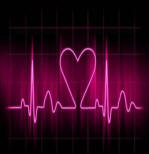CPR information
 When it
comes to a heart attack are you ready? It has been stated that
95% of people having a heart attack will die from this life
threading condition for getting to a hospital. Researchers say
that for every minute a person is not given CPR the chances of
survival drops from 7% to 10%. In a life threaten situation
would you be able to save a persons life?
When it
comes to a heart attack are you ready? It has been stated that
95% of people having a heart attack will die from this life
threading condition for getting to a hospital. Researchers say
that for every minute a person is not given CPR the chances of
survival drops from 7% to 10%. In a life threaten situation
would you be able to save a persons life?
)http://www.americanheart.org/presenter.jhtml?identifier=3034352
)
CPR is a
life saving device that a person could use to act as a heart for
a person to stall the process of death. CPR stands for
Cardiopulmonary Resuscitation. It is used when a person’s heart
is unable to perform its function to pump blood through out the
body. (http://www.americanheart.org/presenter.jhtml?identifier=4479
)
Signs of a
heart attack could range from a ton of different symptoms. Each
person is different and will have different amount of pain and
not everyone one will have the same symptoms. The symptoms that
a person could possibly have would be the pain in the center of
the chest lasting for more than a few minutes. The pain might
leave and then return a few times. There could be pain that is
spreading to shoulders, neck, back or arms. The intensity could
vary between people. The pain might even feel like there is
pressure, tightness, burning, or even a heavy weight on the area
that is in pain. There could also be chest discomfort with a
lightheadedness, fainting, sweating, nausea or shortness of
breath. Some people might get nervous, cold, and have sweaty
skin. The skin could be moist and very pale. They might have a
higher heart beat and it might be irregular. Another symptom is
that they have feeling of doom. A combination of these signs and
symptoms might occur. (http://www.healthcentral.com/heart-disease/patient-guide-44510-6.html
)